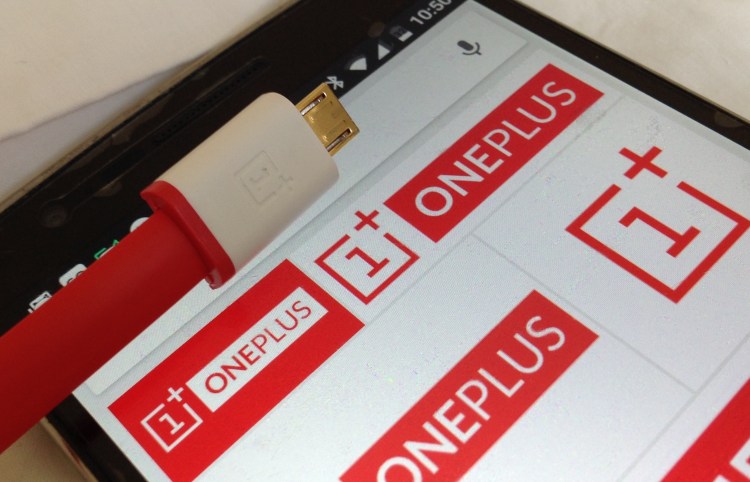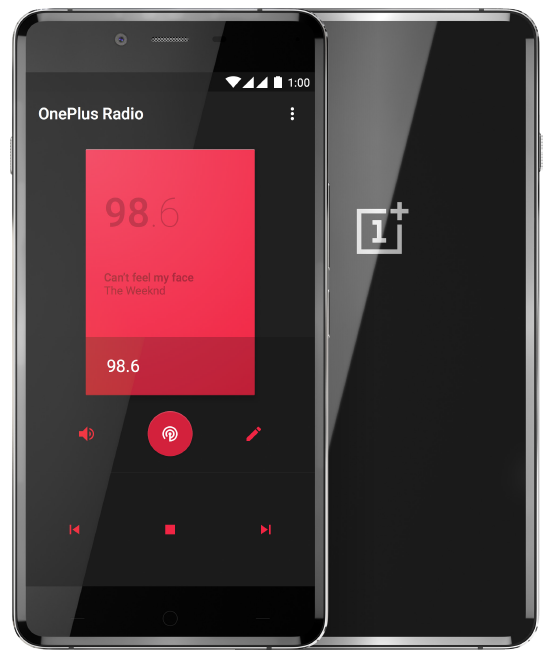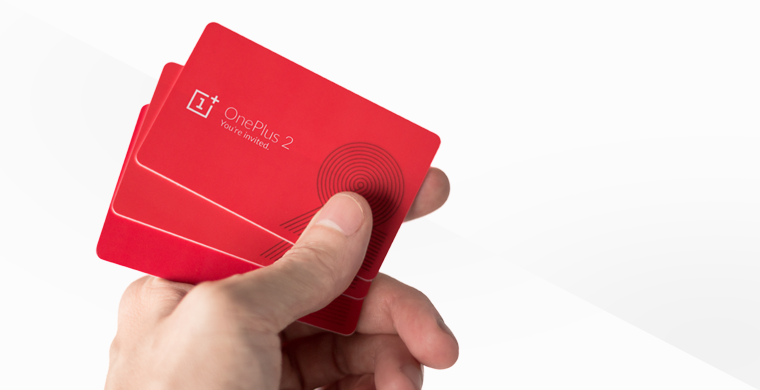Chinese mobile upstart OnePlus launched its third smartphone a few weeks back. The OnePlus X is a smaller, cheaper, more design-focused device than the OnePlus 2, which launched a few months earlier, and the OnePlus One, which debuted a year previous.
Consistent with its launch strategy from the company’s inception, OnePlus isn’t opening sales to just anyone. It’s sticking to the same system it has operated since day one, meaning you’ll need to acquire an invite just to buy one.
Many people continue to question OnePlus’s approach to marketing and sales. So VentureBeat caught up with OnePlus cofounder Carl Pei at Dublin Web Summit last week, and we asked him a bunch of questions that many OnePlus fans may be eager to have answered.
On the OnePlus X
While OnePlus had always maintained it would launch its second flagship phone in 2015, there were also always rumors that there would be a stripped down “Lite” version of the handset as well, one that was even cheaper than the OnePlus 2. Now we know that the secondary device is the OnePlus X and we’ve had a little time to play around with it, it’s clear that this isn’t a dumbed-down OnePlus 2 — it feels very much like it’s a phone aimed at a different market.
“Yeah, I think that’s how we view it as well,” said Pei. “We don’t see it as a mid-range device, or a low-end device, just because it’s a little bit smaller and cheaper. Normally, a low-end or mid-range device would run a Snapdragon 400 or 600 series (processor), and would not be built in glass and metal. In terms of the build and design, it is a flagship phone. But the specs are more thoughtfully selected, because right now the additional benefit of having a faster processor for the user is not that big any more. People value things like design, first impressions, camera, and build quality much more. It’s a product geared towards a more mainstream audience, people who care about the size, the build quality, the materials more than the specs.”
OnePlus has often struggled to keep up with demand, a problem caused by its invite system, which limits availability. So why launch two phones in such quick succession? Doesn’t that compound the problem?
“The entire team is tired, having launched two product in only three months,” said Pei. “The OnePlus X was always planned for a pre-Christmas release, but it just took the OnePlus 2 that little bit longer to develop than we had originally hoped. Normally it takes 10 months to a year to build a product, but with the OnePlus 2 it took 15 months. If we had released the OnePlus 2 a quarter earlier, that would’ve made things much easier for us.”
The introduction of the OnePlus X also signals the company’s future launch cycle plans — it will aim to bring two smartphones to market every year moving forward.
On the invite system
As noted, OnePlus is sticking to its invite-only guns for both the OnePlus 2 and the OnePlus X for now, because it helps the company manage its inventory so it’s not left with excess phones it cannot shift. But does this mean the company is literally building to demand?
“We can’t really build to match demand, because for us the lead time is two to three months,” said Pei. “So right now, we have to foresee what’s going to happen three months from now. And a user is never going to wait three months for a phone. The invite system helps us deal with it in a way that’s more user-friendly. And it helps us manage our inventory a little bit better.”
How effective was the invite system for the OnePlus One? Did the company have many phones left in the end? “We still had a little bit of inventory left over, but not in phones — in components,” added Pei. “We sold them on the second-hand market at a discount. So we lost a little bit of money towards the end, but overall it’s much smoother than a lot of other companies.”
While the invite system is still firmly in place, OnePlus hopes to create open-sales windows much faster than it did with its first phone, which took about a year to completely open the floodgates. The OnePlus X will begin weekly hour-long open windows from early December, and this will eventually be applied to the OnePlus 2 phone later.
Pei is acutely aware of the criticism the company’s invite system receives. He also acknowledged that people will only wait so long to buy one of his phones before they look elsewhere. So will he ever ditch the invite system altogether for a device’s launch, perhaps with the OnePlus 3? “Maybe in a few years,” he said. “The risk in this industry is still pretty high. A lot are bleeding money or leaving the market. A lot of the choices are disappearing. Sony might get out of the smartphone industry, HTC too, while BlackBerry is also struggling. There’s not a lot of players left.”
Does the invite system criticism affect Pei?
“People need to understand why certain decisions are made,” he added. “It’s easy to criticize, but in the end do they want OnePlus to be around or not? Do they want more choice?”
As with many things on the Internet, it’s easy to take a handful of comments and assume that to be the opinion of the majority. Social media tends to amplify the vocal minority, and this is something that Pei is aware of. “If you always just read online comments, then you might feel a certain way,” he said. “But when you meet people in real life, everything is different. It’s not (online commentary) an accurate representation of how things are.”
On ‘never settling’
OnePlus has a motto — “Never Settle” — which is about getting maximum value for your money. An excellent product that you don’t pay through the nose for. But with the OnePlus 2, comments abounded on social media and forums that OnePlus had in fact “settled” for something less than it had promised, because there were some key features missing.
“‘Never Settle’ never meant ‘include everything’,” said Pei. “You could do everything, and nothing will be done well. An analogy I like to use is a chef who has access to a lot of ingredients, but a good dish is not a sum of all the ingredients. There has to be a curation. Always make the best choices for the user — not necessarily every user — but try to make the best choices for the majority of users.”
The big elephant in the room is near-field communication (NFC). The first OnePlus phone offered NFC, but the OnePlus 2 (or OnePlus X) doesn’t — this was a major criticism of the device, especially with Android Pay rolling out in the U.S. So why not include NFC?
“NFC became a big thing for the OnePlus 2, but in reality after people calmed down and thought about it, they really don’t use a lot of NFC,” said Pei. “When it becomes the mainstream, we’ll bring it back.”
This is something I argued in my review in September. NFC hasn’t gained a great deal of traction yet — it’s getting there, sure, but it’s not like Bluetooth or Wi-Fi. So what you have is a few techies who probably would find a use for it complaining about a missing feature that the vast majority of people actually don’t use. It’s the vocal minority creating a needless stink.
“Yeah, but I think that people get affected by the vocal minority,” said Pei. “If they don’t have a strong opinion of their own, they’re going to follow the loud opinion.”
That still doesn’t really address the question that many have: Why not just include the feature anyway? Does it really cost that much extra for components? According to Pei, it only costs an extra few dollars, and it doesn’t take up that much more space. “But the same thing can be said to maybe 10 other things, and they all add up,” he continued. “It all adds up.”
For some, a removable battery is also important, something that neither the OnePlus 2 nor the OnePlus X has. But this isn’t something that Pei is eager to remedy in future devices. There are good reasons why many companies, including Apple, have fixed batteries.
“I don’t think we’ll ever look at removable batteries,” said Pei. “It requires a lot more space in the phone because you have to protect the battery — you need to house the battery in something that doesn’t let it get punctured. Then, you have to build the connector that connects the battery to the phone, which means more circuitry.”
To put this in real terms, Pei said that if the OnePlus One had a removable battery, it would’ve only been 2,700mAh rather than the 3,100mAh it eventually shipped with, simply because of the extra space required.
On marketing and monetization
OnePlus’s mission so far has been about creating a credible smartphone brand, a solid fanbase, and a company that doesn’t bleed money. It has been running at small margins per device, but managed to make a very small profit after the OnePlus One. Pei tells VentureBeat that the company still isn’t making that much money, and because the team has grown so much in the past year, it will probably have a small loss this year.
“Our philosophy is to be self-sustaining and grow organically rather than burn money to get users,” he said. “The right thing to do is to build a strong hardware business and a strong software business. Right now we have a small margin, and the goal is to break even and run a company. As we scale up, the profits will increase, then we can add services on top of that.”
What these additional services will be isn’t yet clear. It won’t be preinstalled apps, though — “That’s the sort of stuff people really hate,” said Pei.
Key to OnePlus’s success will surely be mindshare — getting inside people’s consciousness. OnePlus doesn’t really exist offline yet — unless you pay close attention to the online tech world, there’s a good chance you’ll never encounter the brand. So is there scope here for partnerships, either with brick-and-mortar retailers or mobile networks?
“We are talking to a lot of carriers, but nothing is firmed up yet,” said Pei. OnePlus does actually have an in-store presence in Malaysia, having signed a deal with Maxis Communications, one of the biggest telecom companies in the country. But it’s a strategy Pei is hesitant to follow for many — if any — markets just now.
“If you’re just in someone else’s store, you don’t get to control the story that gets told about your product,” he said. “If you’re just next to a bunch of other products, then the users can’t really tell the difference.”
So OnePlus may need to look beyond its peer-to-peer, word-of-mouth marketing for something a little more brazen. But what that is remains to be seen. “I think there needs to be more product marketing, we need to teach people about what the brand stands for, and why the product is good,” he added.
VentureBeat's mission is to be a digital town square for technical decision-makers to gain knowledge about transformative enterprise technology and transact. Learn More



